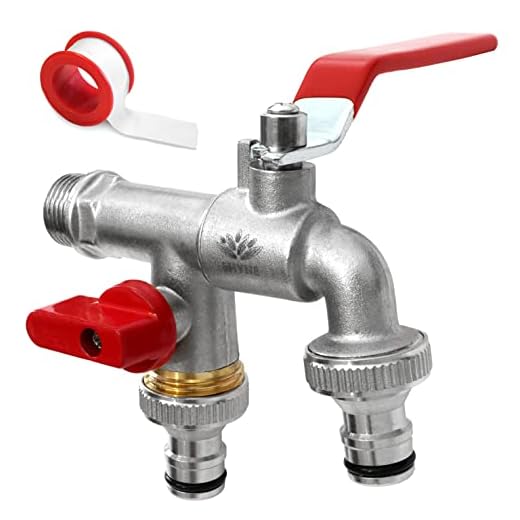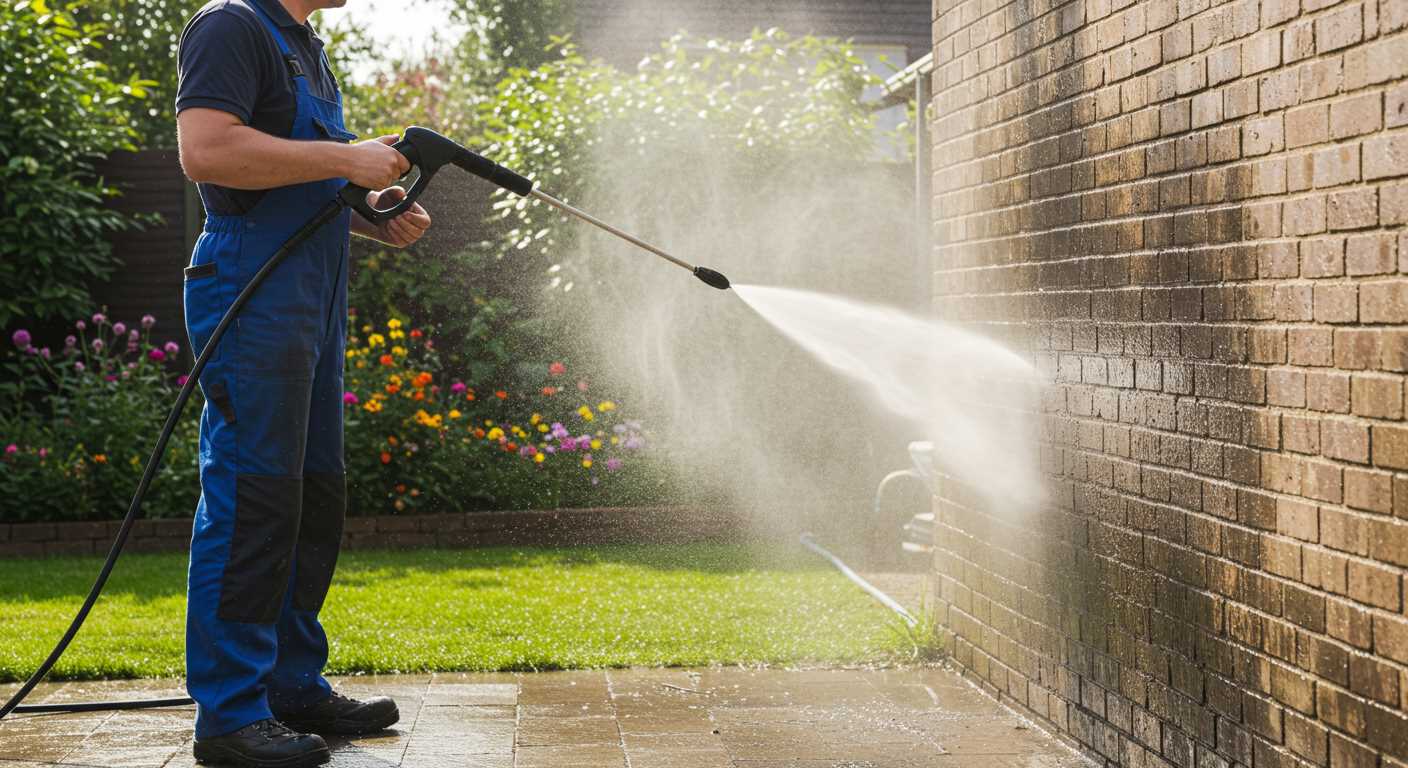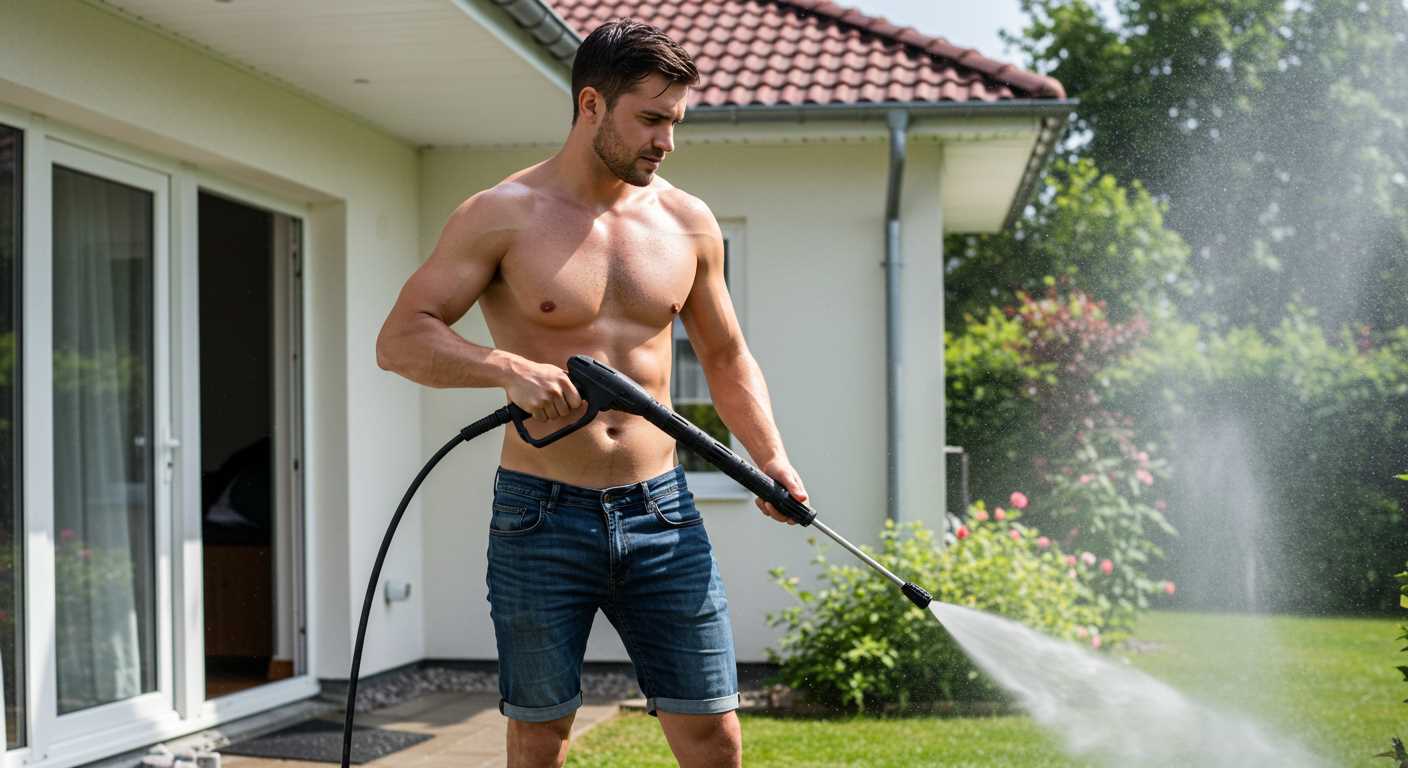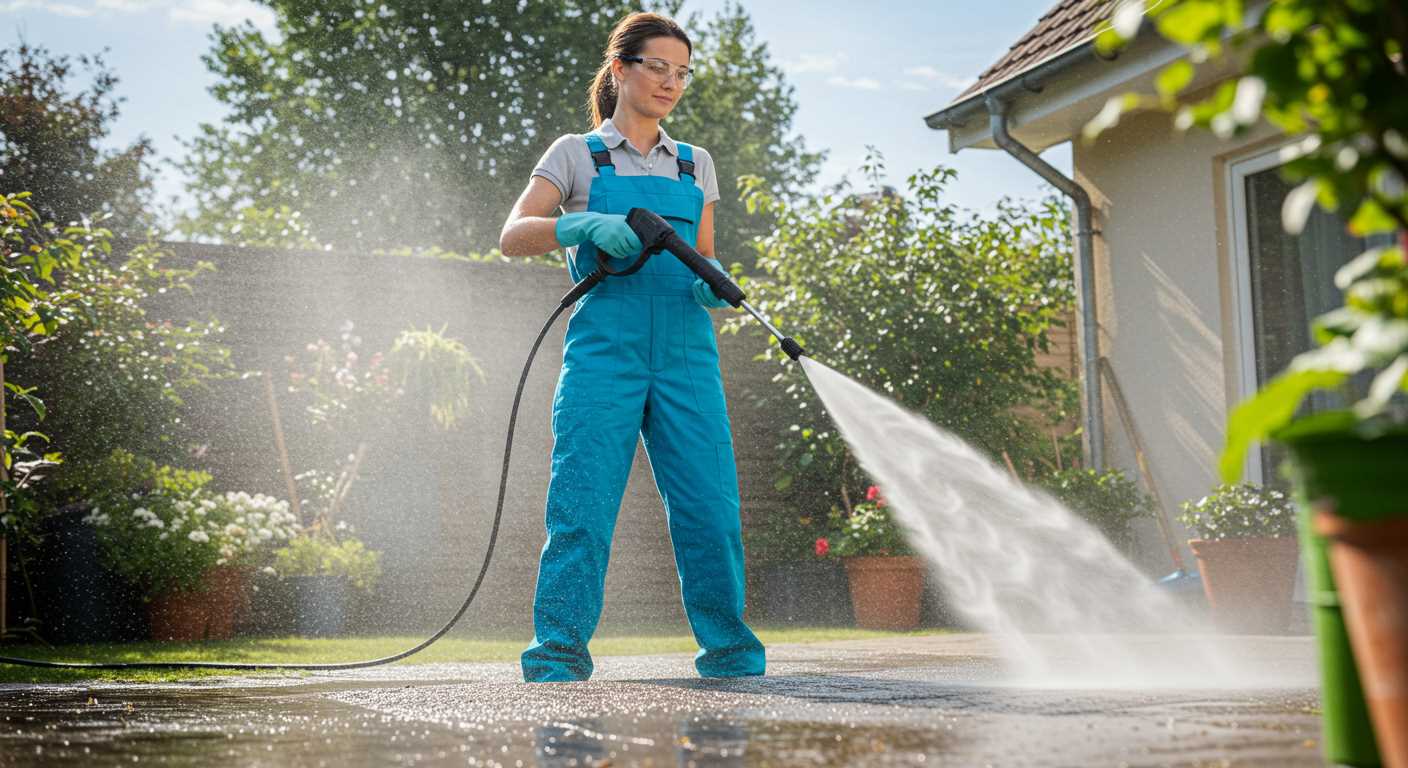



Directly linking a water source to your cleaning device is fundamental. A standard garden hose works efficiently for most setups. Ensure it is properly attached, devoid of leaks, and meets the necessary pressure requirements. This straightforward connection allows for a steady flow, essential for achieving optimal cleaning results.
If the location lacks an external tap, consider utilising a large water tank. Make sure to equip it with a suitable adapter that fits your equipment. Gravity-fed systems can be beneficial, but ensure the tank remains at an adequate height to maintain water pressure during use.
For those with a convenient outdoor spout, an additional quick-release coupling can simplify the process. This allows for swift detachment and reattachment, enhancing overall usability when cleaning is required. Furthermore, investing in a high-quality extension hose can facilitate access to distant areas without compromising water flow.
Lastly, a filtration system is highly recommended. Installing a filter can prevent debris from entering the unit, ensuring thorough and uninterrupted performance while safeguarding the unit’s longevity. Keeping these connections efficient and reliable will elevate the effectiveness of the cleaning process.
Understanding Water Supply Requirements for Pressure Washers

Ensure a minimum water flow rate of 5 to 8 litres per minute for optimal performance. A higher flow rate enhances cleaning efficiency and prevents overheating.
Average household tap pressure ranges from 40 to 60 PSI; however, models designed for heavy-duty tasks may require higher pressure. Verify compatibility with specifications provided by the manufacturer.
Utilise a clean water source, free from contaminants. Sediments can clog filters and affect pressure levels, leading to inadequate performance and potential damage.
For outdoor usage, connect to a garden hose at least 3/4 inch in diameter to prevent bottlenecks. Avoid using hoses longer than 50 feet, as excessive length can lead to pressure loss.
Consider adding a water filtration system if hard water is an issue; this protects internal components from scale buildup and prolongs the lifespan of the equipment.
The temperature of the water should not exceed 60 degrees Celsius, as higher temperatures can cause seals and hoses to degrade rapidly.
Always check for leaks in the hose and connections before starting. Regular maintenance of the water supply system ensures consistent performance and reliability.
Choosing the Right Hose for Your Pressure Washer

For optimum performance with a high-powered cleaner, selecting a suitable hose is non-negotiable. Aim for a high-quality, durable option that can withstand the required pressure without wear. A length of 25 to 50 feet typically suffices for most tasks, allowing ample reach without compromising flow.
Consider the diameter; a 1/4-inch size generally provides sufficient water flow for residential units, while heavier-duty models often need a 3/8-inch diameter to handle increased pressure levels effectively. Investing in reinforced hoses will ensure resistance to kinks and wear, prolonging the lifespan and enhancing usability.
Look for hoses compatible with quick-connect fittings, facilitating easy connection and disconnection from the cleaning equipment. Using a hose rated for your specific model’s pressure limit is crucial to avoid leaks or burst failures during operation.
To maintain efficiency, regularly inspect hoses for signs of damage or wear. Storing them properly, such as coiling them without tight bends, can help prevent premature deterioration. A good hose becomes an invaluable asset, contributing to smoother operation and better cleaning outcomes.
Connecting to a Garden Tap: What You Need to Know
To establish a reliable water supply, a garden tap serves as an ideal source. Make sure the tap is functioning correctly and has a standard ¾-inch threaded outlet, which fits most garden hoses commonly used with cleaning devices.
Required Accessories

An appropriate threaded adaptor is necessary to ensure a secure fit. Check if your device includes a quick-connect fitting; if it doesn’t, consider purchasing an additional adaptor to avoid leaks. A hose protector can also prevent kinks, which may affect water flow.
Hose Length and Diameter
Select a hose that is long enough to reach from the garden tap to the equipment, ideally between 6 to 15 metres. A diameter of ½ inch is suitable for most models, providing sufficient water flow without pressure drops. Avoid using hoses longer than necessary to maintain optimal performance.
Using a Water Tank: Setup and Considerations
To efficiently utilise a water tank for a cleaning machine, it’s crucial to select the right type and ensure proper setup. A robust and unobtrusive tank can provide sufficient flow without any interruptions. Aim for a tank with a capacity of at least 50 litres to avoid frequent refills during intensive tasks.
Selecting the Appropriate Tank

Opt for a tank made of high-density polyethylene (HDPE) or food-grade material to enhance longevity and prevent contamination. Consider tanks with a built-in level indicator for monitoring usage.
Setup Guidelines
Position the container close to the machine to minimise hose length, reducing pressure drop. Elevating the tank can leverage gravity for improved water flow, but ensure stability to prevent spills. Employ quality hoses and connectors to guarantee no leaks or pressure loss.
| Tank Capacity | Recommended Hose Length | Material Type |
|---|---|---|
| 50–100 litres | Up to 10 metres | HDPE or food-grade |
| 100–200 litres | Up to 15 metres | HDPE or food-grade |
| 200+ litres | Consult specifications | HDPE or food-grade |
Regular inspection for leaks and blockages is vital for consistent operation. Always empty and clean the tank periodically to prevent algae growth and ensure optimal hygiene. With the right setup and maintenance, using a water storage solution will enhance the overall performance of your cleaning unit.
Electric Connections: Powering Your Pressure Washer Safely
For optimal operation, ensure an electric source is rated for the device’s specifications. Generally, a standard 240V outlet is ideal, but check individual requirements. Confirm the amperage capacity aligns with the unit’s demand to prevent circuit overloads.
Utilise a heavy-duty extension cable if the distance from the outlet exceeds the standard cord length. Select cables designed for outdoor use, rated to handle the wattage of the equipment. Avoid using multiple power strips, as this increases fire risks and adds strain to electrical systems.
Prior to plugging the unit in, inspect the cord for damage. Any fraying or exposed wires necessitate immediate replacement to avoid safety hazards. Always use Ground Fault Circuit Interrupter (GFCI) outlets for added protection, especially in wet environments.
Ensure the unit remains dry while in use and avoid handling the cord with wet hands. Maintain a clear zone around the machine to prevent potential hazards during operation. Regular checks of electrical components can help maintain efficiency and longevity.
Connecting Accessories for Enhanced Cleaning Performance
.jpg)
Utilising the right attachments can significantly boost cleaning results. Here are key accessories that enhance operations and efficiency.
Types of Accessories
- Nozzles: Different spray patterns adjust water flow, targeting specific tasks. For instance, a 0-degree nozzle delivers a concentrated jet for tough stains, while a 40-degree fan pattern is perfect for delicate surfaces.
- <strong.Attachments: Foam cannons mix detergent with water effectively. This allows for thorough application and greater cleaning power, especially on vehicles. Ensure compatibility with the unit.
- <strong.Brushes: Rotary and surface cleaning brushes enhance scrubbing capabilities. Choose brushes with soft bristles for paintwork and firmer ones for concrete or textured surfaces.
Tips for Optimal Use
- Always match accessory specifications with the equipment’s pressure ratings. Overloading accessories can lead to equipment failure.
- Test different nozzles on discrete sections first to prevent damage.
- Regularly clean and maintain attachments to ensure longevity and consistent performance.
Applying these accessories can transform the cleaning process, making it quicker and more thorough. Proper selection and maintenance are key to achieving the best results.








